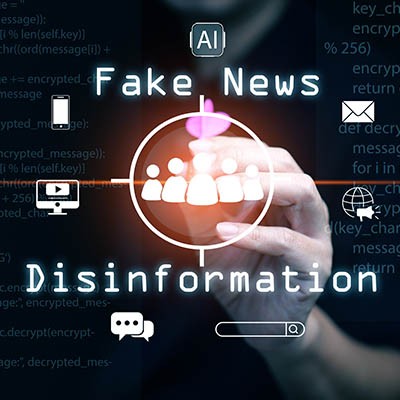Your business data holds vital information, but it needs to be organized and presented in a way that makes this information accessible. Visual representations will be immensely helpful as you translate this data into a form that is more comprehensible to everyone. Let’s go over five ways that data visualizations and interactive dashboards can help you express your information to those invested in your success, whether it's your team or your external stakeholders.
BSGTech Blog
Have you ever been met with resistance when you implement a new IT policy or solution? You’re not alone; countless CIOs and business owners experience this issue any time they go to implement an innovative new tool that can have a significant impact on operations. Here’s how you can have a rock-solid approach to taking the friction out of new IT initiatives for your organization.
Data is, in its most pure form, knowledge that has been collected for use by your business. It’s not unlike a library in this way..but even libraries can crumble into dust, given enough time, as is evidenced by the Library of Alexandria. Despite its every attempt to overcome cultural prejudices and collect information on ancient civilizations, it still fell—and all its information along with it.
In the grocery store, we’re given the estimated date that the food we’re buying will turn, helping us to make more informed decisions about what we are purchasing and the quality therein. Wouldn’t it be nice if the same could be said about the technology our businesses rely on?
Well, moves are being made to establish this as the standard in tech as well.
Most business owners don’t have the right technology in place. We see it all the time. A company will call us because they are not seeing the returns they anticipated on their technology investment, and after the assessment, they simply don’t have the right tools in place.
Make no mistake about it, electing the right technology for your business is crucial for success. In today’s blog, we provide four tips to guide you in making the best choice.
Given the widespread discussion surrounding artificial intelligence (AI) in households nationwide, it's evident that this technology has become integral to the operations of numerous entities. AI has found its place, from business and education to civic affairs, even within the U.S. Department of Homeland Security (DHS). How exactly is the DHS harnessing AI to enhance the security of everyday Americans?
It’s not just major corporations and enterprises that need to worry about cybercrime and other types of digital threats; even the small businesses and local shops of the world have to contend with cyberattacks that could potentially strike at any moment. Let’s examine some statistics concerning one of the fastest growing threat vectors out there.
There are countless ways that Google proves itself to be invaluable to businesses. For example, did you know that it offers a feature that allows you to have business insights (or any other topic of interest) sent straight to your inbox? Let’s go over what Google Alerts are, and how you could take advantage of them.
The mission statement is an important part of any business which guides its practices, but it doesn’t have to do so at a macro level. You can implement mission statements for your various departments, including your IT department. Let’s go over how you can craft the best mission for your IT team so they can keep working to make your operations as effective as possible.
A lot can change in business technology, even over the course of one short year. You should have IT workers on staff who are constantly seeking to improve their own skills and earn certifications that prove their continued dedication to professional development. Here is a short list of certifications your IT staff should consider seeking—or, if you don’t have internal staff, your outsourced technicians should hold.
When you see the words “artificial intelligence,” what runs through your mind? Some imagine warehouses full of machines pulling items from shelves for order fulfillment, whereas others imagine server rooms operating at maximum capacity. The truth of the matter is that both of these scenarios are correct, depending on the type of organization and industry you’re talking about. Let’s take a look at how artificial intelligence can cut costs, improve operations, and eliminate unnecessary or repetitive tasks for the small business.
Data is one of—if not the—most essential resources a business has, which means it is essential that you take the steps to protect it in every way possible from every potential threat. This includes those that could originate from within your own organization. Let’s consider the case of Xiaorong You, who was recently convicted of conspiracy to commit trade secret theft by a federal jury.
Even the most seasoned technology professional—the most gung-ho person about the technology—probably thinks that there’s too much IT-related jargon and buzzwords now floating around. There is a good reason for this: analogies and euphemisms are effective ways to communicate concepts and ideas that would otherwise require technical experience.
However, there is such a thing as too much.
To succeed in business, you need to cultivate relationships with the people you call your prospects and clients. Like any relationship, this takes a lot of work, never mind the fact that you’re dealing with hundreds instead of just one. However, there is a solution to help you with this, called a CRM, and its integrations offer nothing but benefit. Let’s discuss.
Internet-based companies have access to an audience that, at the very least, are extremely trusting of them. There is an expectation that these businesses will fulfill their promises while also protecting the information that their customers and clients provide to them, but are these expectations well-founded? Let’s consider common collection practices companies deploy and how you can keep yourself safe.
In business, Portable Document Format (PDF) documents are encountered constantly. The benefit is that they are a great way to share and receive documents on any device. One main problem many people run into is that they think that it’s a read-only format. Today, we turn this common misconception on its head by providing some tips on how to better manipulate the PDFs you receive.
We always recommend cloud platforms to our clients, especially those who need a central place to host important data and applications. However, it is possible to go too far when implementing cloud services. We’ll discuss how you can monitor your cloud computing costs, as well as how access to cloud solutions can be a detriment to your organization.
Businesses are expected to make a choice regarding which solutions they will utilize. Typically they choose between Google’s or Microsoft’s productivity solutions. The unfortunate side of the choice is that they are often used exclusively, meaning there was little interoperability between the two. Nowadays, however, Google is moving to allow users to edit Microsoft Office files in Google Docs.




















